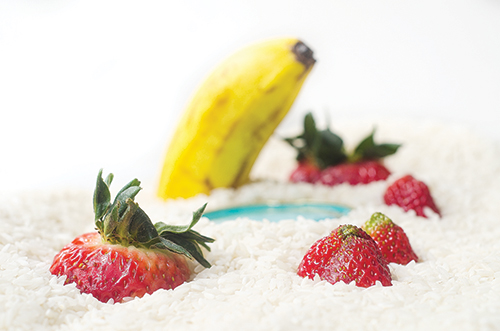Imagine walking into a garden filled with seasonal produce readily available for harvest. Now imagine that the same garden is easily accessible to the public for said harvest and consumption.
Edible forests

Imagine walking into a garden filled with seasonal produce readily available for harvest. Now imagine that the same garden is easily accessible to the public for said harvest and consumption.
This Eden-like image is coming to fruition (pun intended) in Seattle: The Beacon Food Forest stretches across seven acres in Seattle’s Beacon Hill neighborhood. It’s still in the construction stage, but the forest already provides “fruit-bearing perennials”—an awesome concept despite the long wait for fruit-bearing trees. The forest is home to community garden plots, orchards and “edible arboretums.”
The idea sprouted in 2009, when Glenn Herlihy, a member of the Jefferson Park Alliance, and a group of fellow students created the park’s design as a permaculture design class project. Through community outreach and donations, the group was able to raise the money to turn their class project into a reality.
The official groundbreaking was in 2012, with perennials planted and situated in such a way that permaculture and a self-sustaining environment would be possible. With Seattle’s heavy rainfall, drought won’t be an issue.
A community garden full of free food sounds almost too good to be true, but the idea has been proven highly successful all over the country. Seattle’s is by far the largest forest.
Also adjacent to Jefferson Park, the forest is located in a bit of a food desert. Many Beacon Hill inhabitants are working class, and the neighborhood doesn’t necessarily have grocers who sell fresh produce and healthy-eating foodstuffs. That’s why the forest will be a success. By
providing inhabitants with fresh organic produce, the garden serves the overall health of its neighbors and promotes a sustainable lifestyle.
This is a truly beautiful project, and I hope it flourishes. But what about Portland? Considered one of the greenest cities in the U.S. for a long time now, Portland doesn’t have a single food forest on par with Seattle’s BFF.
Despite ready access to fresh produce throughout much of the city, food deserts still exist here. The Cully neighborhood in North Portland is primarily made up of lower-income, working-class folks, and the otherwise ubiquitous Whole Foods, New Seasons and farmers markets are notably absent. Thankfully, there are kind-hearted Portlanders who share
Herlihy’s mindset.
Operating throughout Northeast and Southeast Portland is the Portland Fruit Tree Project. PFTP has established small orchards on Killingsworth,
Mason and Cooper streets. All three locations are dedicated to cultivating self-sustaining gardens that provide fruit-bearing perennials as well as various fruit trees.
Inner North Portland also has the Fargo Forest Garden, which houses 14 fruit trees and one nut tree. The fruit and nut trees were the only plants originally planted there, but berries, herbs and bulbs have also taken root.
All of these gardens and small forests are designed to provide fruit to neighborhoods that might not have access to it otherwise. That’s pretty great! We’re still behind Seattle, but we’re certainly on our way. What we need now is to come together as a community to cultivate these kinds of projects.
I remember being in high school and getting ready to make college decisions when I received Portland State’s viewbook in the mail—printed on post-consumer recycled paper. The pages inside played up Portland’s and PSU’s dedication to sustainability. This is part of the reason I chose to attend PSU over the University of Oregon. I wanted to live and thrive in a city that values many of the same things that I do.
PSU students in the sustainability and urban planning programs have no doubt created projects along these lines. However, simply creating something for a class does little to serve the community. Projects like these should be made known to the entire student body, and then the rest of the city.
Part of cultivating sustainability is coming together and building communities. Not that it’s a competition, but Portland should be on the same page as Seattle in terms of sustainable community gardens and food forests.
I’m not studying sustainability or urban planning, but I’m careful to implement many of the same sustainable philosophies and ethics into my everyday life. Like every other PSU student haunting Food For Thought (which has its own tiny garden on campus), I eat a strictly vegan diet and recycle everything I possibly can.
Much of that was part of my lifestyle prior to moving here, but not everyone has that same privilege growing up—just like not everyone lives in a neighborhood with community gardens, food forests and higher-end organic grocers.
If we want to keep this sustainability thing going, we have to cultivate these kinds of things in—for lack of a better term—less privileged neighborhoods. Otherwise, Portland risks falling into a gentrified slump. Whatever the case may be, growing a sustainable lifestyle for everyone, not just those privy to it already, should be readily available to all, and making it thus should be a goal for all of us.



